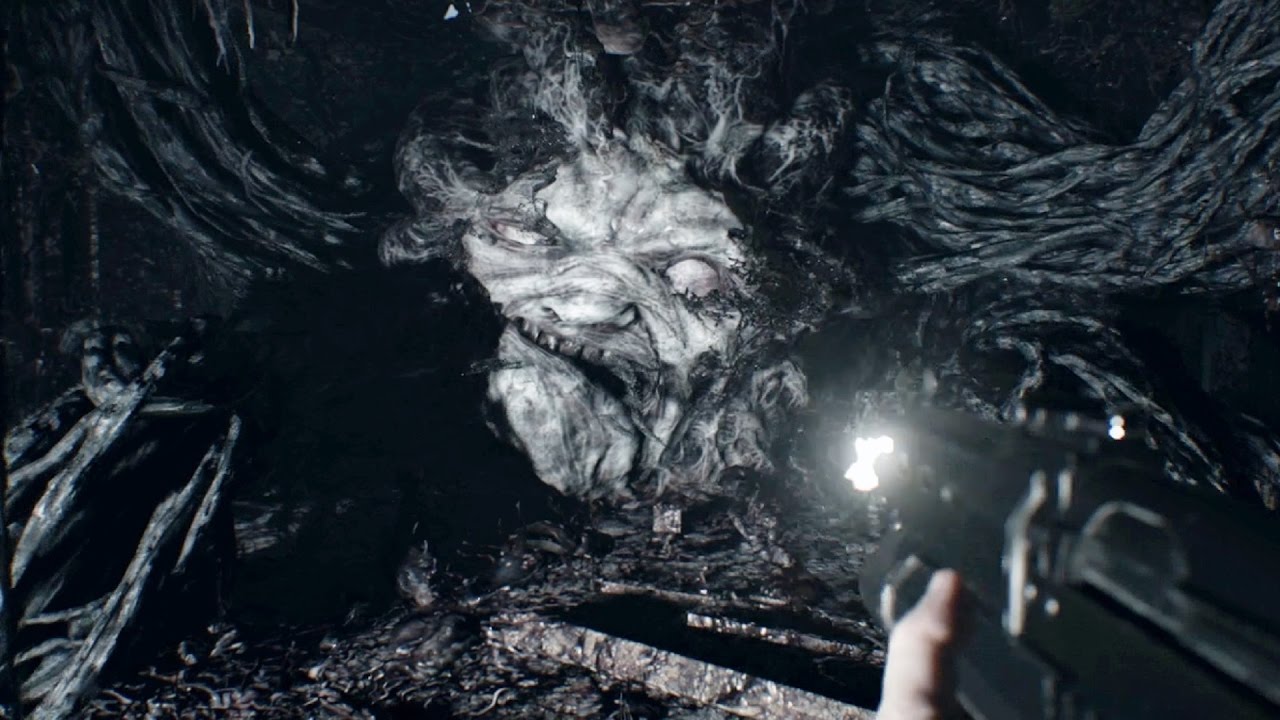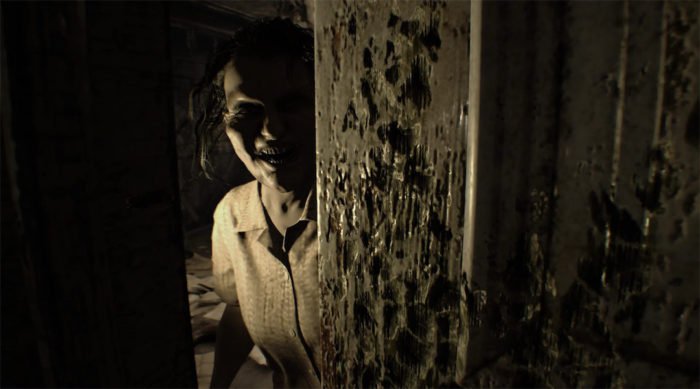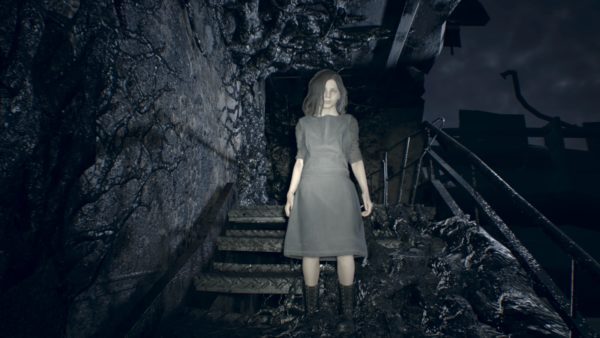There’s no arguing that Resident Evil 7 is a great horror game but some of the character choices left us scratching our heads.
Resident Evil 7 focuses its action around the Baker family. Although they are revealed not to be the primary antagonists of the game, their roles are front and centre for most of the player’s experience.
This is for the best. The Bakers are among the greatest character designs in modern horror. It is due to how real, how visceral, these characters feel that drives the fear.
Resident Evil 7 Review
Initial release date: 24 January 2017
Developer: Capcom
Publisher: Capcom
Series: Resident Evil
Genre: Survival horror
Platforms: PlayStation 4, Xbox One, Microsoft Windows
Transplant villains from other series into Resident Evil 7 and the game loses much of its effectiveness. Despite this, they’re simultaneously some of the worst, too. In order to support the somewhat whimsical plot of the latter half of the game, the Bakers undergo ridiculous transformations.
Mechanically, the thought process is sound: take the already familiar enemies and twist them into grotesque monsters. It raises the stakes. It widens the scope of the horror elements (that is, those of us scared by monsters now have something that caters for them). The bad news is this goes against what makes the Bakers such great characters.
This might be more of a complaint about the last quarter of the game. After the Lucas chapter, the game’s plot goes ever so slightly out of control. And it’s this lack of control the Bakers’ transformations shore up. Perhaps this is because it’s more traditional Resident Evil – a series I’ve never had much patience for until now.

Eveline is Fleshed Out
In the latter half of the game, it becomes known that Eveline, a mind-controlling bioweapon responsible for all the tar everywhere, is behind the events of the game. She is responsible for the Bakers’ behaviour (although the jury is still out on Lucas); she is responsible for their superhuman abilities; and she is responsible for the player being in this mess.
The issue is: we never explore her reasons for this. Eveline seems to be taking over the world just because she can. Players spend the game tracking down Mia and the serum to help them escape. We are caught up in the chain of events that lead us to kill Eveline. Okay, that makes sense. She takes Mia, Ethan wants Mia. These events have a logical sequence.
The game never discusses what brought Eveline to this point. Even the game’s internal literature can’t narrow the exact reason down. It states that Eveline has an obsession with family but doesn’t specify if this is because she’s lonely or because she’s tactical.
Using what the game gives us, we can fathom that Jack, traipsing around the bayou, finds little girl Eveline and Mia in or around the crashed tanker. He takes them home and cares for them. Eveline infects and warps their minds as, over the three years she’s there, becomes the matriarch. We still don’t know why.
I can’t help but think the game would be so much stronger if the final two chapters were different.

Marguerite is the Star
There’s an interesting irony in Jack Baker getting the most screen time. Of all the Bakers, he’s the most one dimensional. Many of the documents found throughout the mansion are simply continuations of Jack’s theme: pursue, attack, then piss about. Lots of his notes are instructions about the “guests” getting away. He feels as though he lacks genuine depth.
Marguerite, however, is the breakout star of the game. She is textbook perfect. Even in her mutated form, it’s not wholly bad. Marguerite has everything that a horror villain needs: we can’t predict her reactions, she’s unkempt and dishevelled, and her voice acting is brilliant.
The player is first introduced to Marguerite during the dinner scene after Jack drags Ethan from the guest house. She stares at the player expectantly, hoping he’ll eat. When Ethan doesn’t want the food, Marguerite becomes enraged, shouting profanities in between noting how she made it for him. Her values are unpredictable. Part of what makes Marguerite so terrifying is her unpredictable values. It’s not inconceivable she’d be miffed Ethan didn’t eat her feast, but the degree of her reaction is all the difference: when she finds us scurrying about later in the game, there’s no telling what she’ll do.
Marguerite’s design is also exactly what the game needed. There’s a motif throughout Resident Evil 7 of suburbia gone wrong. There are plenty of places inside the Baker estate that, on the whole, look entirely normal. The guest house itself is entirely usual in shape. There’s perfectly ordinary wallpapering in the TV room and run of the mill appliances in the kitchen. But there is always a small detail that shows its insidious nature. Again, take the main hall of the Baker mansion. Not unusual until you see the three-headed chimera dog door lock.
Marguerite continues this trend with her appearance. She’s wearing very plain clothes and extremely sensible shoes. Her visage is twisted by the infection: her skin is gaunt, her hair is filthy, and she carries that monstrous appearance as a subtext of her simplicity.
These reasons are why the Bakers’ transformations are such a shame for me. Being rooted in reality is what makes them so intimidating. We combat them on a human level. They are dangerous, we are not. Suddenly, when they become mutant creatures more akin to traditional horror, it’s okay to shoot them. There’s no ethical question because they’re not human (and they don’t die).
Her appearance in the Bedroom DLC only goes to show how strong of a character Marguerite is. She creates tension through oppression of the player. Her mothering takes familiarity and twists it into something macabre. Again, Marguerite’s reaction to a dispute with Jack – that is, to blame the player – only stands to further her danger.

Ethan takes it all in his stride
Character development is something that drives all good narratives. We see in Far Cry 3 and, to a degree, Tomb Raider, the protagonists’ journey from unassuming and naive to bad ass gunslinger. Part of our identifying process with these characters is the logical series of steps in this transformation. They behave as we would; and as they change in the game, our attitudes in playing it also change.
Ethan, however, doesn’t have a pronounced development when faced with some truly horrific events. He loses a hand, a leg, is attacked with chainsaw scissors and all manner of nonsense. Indeed, his reaction to his missing wife sawing off his hand is resoundingly “fine. Lets just shoot her then.”
While Ethan’s brashness doesn’t necessarily detract from the core experience of the game, when sitting through cutscenes (such as the third fight against Jack), there is very much a disconnection between player and plight. There are no stakes.
I can’t help but thinking ‘what if’. What would Resident Evil 7 be like if the tense, claustrophobic atmosphere of the Bakers’ natural forms continued through to the end? There are pieces of this game that rank it among the greats of the genre; but it falls into similar traps as previous entries in the series.
What do you think? Was Marguerite your favourite of the Bakers? Or are you awaiting Lucas’ return in possible DLC?
I can’t help but thinking ‘what if’. What would Resident Evil 7 be like if the tense, claustrophobic atmosphere of the Bakers’ natural forms continued through to the end? There are pieces of this game that rank it among the greats of the genre; but it falls into similar traps as previous entries in the series.
What do you think? Was Marguerite your favourite of the Bakers? Or are you awaiting Lucas’ return in possible DLC?
